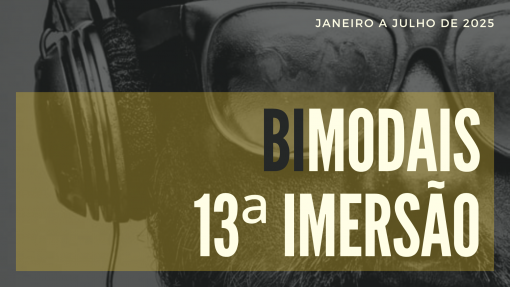I understand projects 2.0 as looking at the ground without letting the sky out of sight – Rômulo Rocha, an employee who participated in the Wikishop to discuss the project 2.0 in Dataprev – from my phrase collection in Portuguese.

Building the corporate bridge, from 1.0 to 2.0.
As I wrote in this blog, there are two collaborative trends underway in current society:
- Technological – the maturity of a technology (Internet) which allows collaboration at a distance (many to many), through tools 2.0, after centuries of unidirectional tools also used also at a distance.
- Ideological – the practice of collaborative group work, which has emerged since the caves, and doesn’t rely on technology. Collaborative work may or may not utilize tools to expand the limits of a given physical space. The use of collaborative technologies doesn’t necessarily lead to voluntary collaboration, but it opens up a broad array of involuntary actions which paves the way for voluntary ones, as we will see later on.

It is also necessary to understand that in implementing 2.0 technologies we can achieve two types of collaboration:
- Involuntary collaboration – clicks, actions such as online purchases and download of software are acts you perform out of need or purpose. Without your knowledge, they help the system to record your actions and draw up a personal profile as well as a group profile. This is a novelty in the networked digital world, as everything we do leaves a digital track. This was not possible in the Middle Ages or in the time of books, newspapers, radio, and television. In this type of collaboration, based on the use of suitable tools, you do not spend any of your time to collaborate with the whole network. It’s a natural outcome, it’s part of the action itself, of the process.
- Voluntary collaboration – actions in which you deliberately express an opinion, commentary, rating, evaluation, or blogging, wikiing, tagging, answering online surveys and polls. In all these actions, the collaboration basically relies on your will, voluntary action and motivation. You need to dedicate some time to make it happen.
This conceptual perception of the process will help us to think through projects 2.0 for corporate intranets.
Thus, there are three different stages during the implementation of intranets 2.0 – which may or may not develop in parallel.
Let’s see.
- Stage 1 – changing the way we think about work. It’s basically a cognitive shift to accept the introduction of involuntary collaborative tools into the current process, with a new form of control over data and work files. This change no longer entails saving the results of my work on my hard disk, at my department, or in a restricted area, and touches the following ingrained feelings of the generation currently in the job market: fear of losing power, shame of exposure, narrow departmental corporatism, among others.
- Stage 2- beginning to work in a different form, through the gradual implementation of 2.0 tools, which enable users to derive benefits from involuntary collaboration, originating in the collaborative internet, directly through day-to-day work , through publication in open areas, and overcoming the idea that such projects will require people to work harder. This won’t happen, as we saw earlier that involuntary collaboration is automatic. What does change is the routine for saving data. Before they were closed and now they are open to general access. This allows data to be complemented by the person accessing them (comments, notes, tags, etc.), combined with searches, relevance by number of clicks (as Google does), etc. will make activities less repetitive. Knowing what others did, I’ll do better in less time, building on the work already done and increasingly eliminating the current involuntary collective stupidity by replacing it with involuntary collective intelligence.

- Stage 3 – achieving full collaboration, both voluntary and involuntary, through the collaboration of all, with a change in approach. Over time, it is expected that the new practices of involuntary collaboration will lead to less repetitive tasks. It is also expected that with involuntary collaboration time spent on searches will be reduced, allowing more time to enhance routines, improve ways of doing things, with more effort dedicated to innovation and less to repetition and duplication. Based on this, there is a stimulus to commenting, tagging, blogging, discussing, enhancing. This process will be facilitated if companies start to value and promote employees who voluntarily collaborate with the whole enterprise. This attitude begins to be stimulated and recognized as an important element by the community. Monitoring the data is necessary to execute this activity. Usually, corporations resisting these changes fear loss of control, and have doubts about how to differentiate initiative from indiscipline. These are current issues in companies that want innovation and agility, increasingly decentralizing power.
These three stages summarize the goal of projects 2.0. Companies abroad are following this route. See the work by Jakob Nielsen, with comments in Portuguese and Spanish.

In the projects I’m involved with in this area I could perceive that the first thing people resist is accepting that the implementation of projects 2.0 will change the current way of working.
In other words, they want to implement collaboration in digital networks without changing the current corporation.
This is a myth!
This would be a burden on people, who would have to work more, and after hours!
In this case, something is out of focus!

Careful with the focus!
What is done, right off the bat, is to change the form of work to avoid repetition, by modifying the repository of digital data, resulting from the intellectual effort of each employee/collaborator.
Thus, we will have a repository 2.0 – antiredundancy and antirepetition, participatory and automatically saved.
For lack of precise information about what is coming next because it’s new, people are quite resistant to change, trying to introduce activities that won’t modify work operations. This is an escape to keep the company unchanged, without collaborative tools, creating fake actions, fantasies, to avoid the process of change.
If the company directors are not firm in their purpose, forget it!
Someone well respected in the company has to buy into the idea and sell it to the group!
It’s very easy to emphatically defend the view that collaboration and work are two different things.
This must be denounced and fought against during the implementation of projects 2.0, as there is a tendency to remain as 1.5 companies – with some concepts or even one with a few 2.0 tools, but with an old attitude towards work.

Beware of fake projects 2.0!
We are talking about changing the way of doing work (from keeping data in closed areas to placing them in open ones). Ultimately, it’s a shift in corporate management, from a model of vertical information (from top down) to a more loose and horizontal model (from bottom up), new forms of control based on the web experience.
Thus, it’s not anarchy, but a new kind of operational management, more consistent with current market speed, extracting all the good things the internet has brought us, generating in the end more innovation and value.
(Everything will be easier to accept when your competitor starts to implement this idea. The problem is that by then you will be lagging behind!)
Projects 2.0 are a frontal attack to the our present-day neurosis of viewing work and collaboration as antagonistic terms.
Thus, I suggest that we all go to the blackboard every morning and write down:

- There is no difference between collaborating and working!
- There is no difference between collaborating and working!
- There is no difference between collaborating and working!
- There is no difference between collaborating and working!
It’s necessary to rethink, redefine, and review the term co-llaboration (work together).
Write on the blackboard:
- There is no difference between collaborating and working!
- There is no difference between collaborating and working!
- There is no difference between collaborating and working!
- There is no difference between collaborating and working!
Thus, step one is to view in a different way the act of working itself.
Today, we work alone
In sum, let’s put it in other words to avoid any doubts.
We are paid to produce cognitive data and the result of this work is not available to the organization as a whole. Even when it’s available, it doesn’t allow people accessing those data to collaborate in an involuntary fashion, through 2.0 collaborative tools, by just clicking and adding relevance.
Or else in a voluntary way, making comments and rating so each result of the actual work becomes more relevant, innovating, and accurate.
Only this would prevent throwing money (resulting from intellectual capital) out the window!

Finally, introducing collaborative tools into the work process changes where we save our work, without in any way increasing the time spent doing it.
As Sara, from Dataprev, put it:
“It can’t create a problem; it must be a solution!”
Working and saving the results in public corporate spaces doesn’t imply more work, but just a different way of storing our work, without increasing the time spent in the operation.
Write on the blackboard:

If a project 2.0 increases people’s workload, it’s got the wrong focus!
If a project 2.0 increases people’s workload, it’s got the wrong focus!
If a project 2.0 increases people’s workload, it’s got the wrong focus!
If a project 2.0 increases people’s workload, it’s got the wrong focus!
It’s a model similar to the one that has been used in sites distributing and selling software for years. See the figure below:

In a fast and efficient way, a simple and intelligent drop down menu can offer information on what type of data are useful, as each visitor aggregates value to the database.
Thus, instead of doing double work, the organization 2.0 will increasingly avoid repetitions.
The time spared with the elimination of repetitive work will be dedicated to innovation, readying people for the second stage: voluntary collaboration.
People will be more motivated and use their minds more creatively.
Will we make it?
What do you think?
Twitter in English. Follow me.
Twitter in Portuguese. Follow me.
Translated by Jones de Freitas. Edited by Phil Stuart Cournoyer.










[…] (Este artigo em inglĂŞs / English.) […]